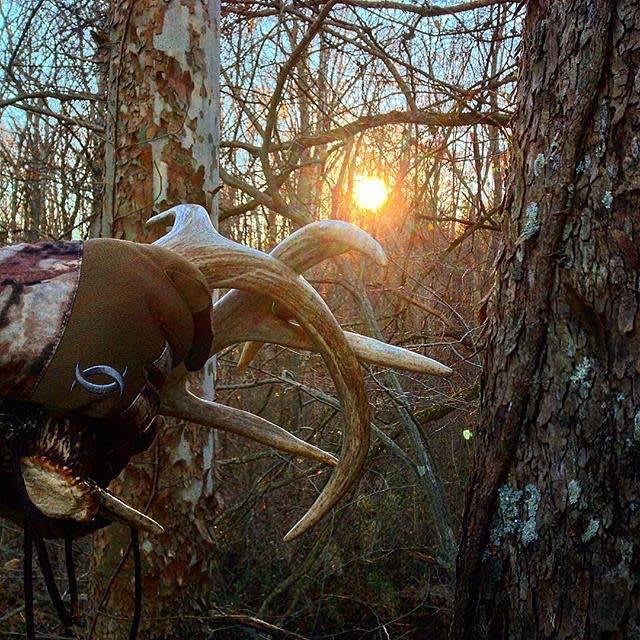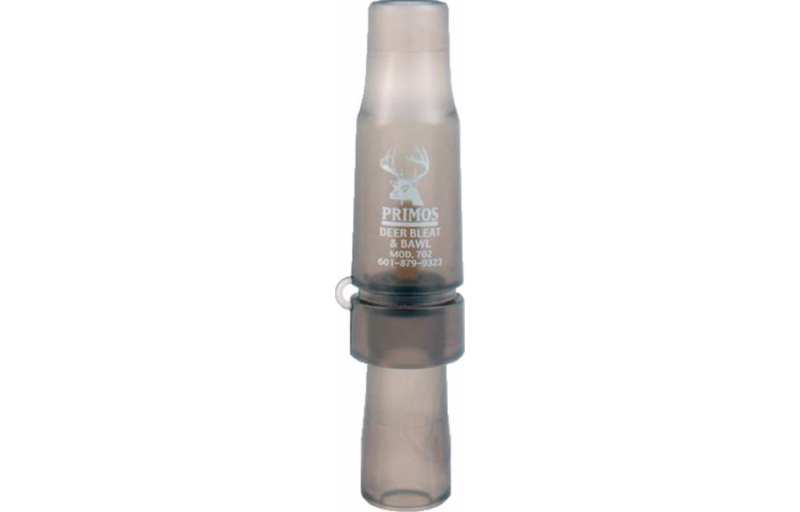Deer Calls: Which Ones Work?
OutdoorHub Staff 10.25.16

Instead of sitting in a tree and hoping a buck walks by, why not take a more active approach to your deer hunting? A variety of tools can bring whitetails closer to your stand, adding a new level of fun to your time in the woods. The most effective? Deer calls.
Grunt tubes, bleat cans and rattling antlers can turn a long sit into a productive and eventful one by coaxing whitetails a little closer. Don’t expect deer to come running every time you use one, though. You just have to hit the right notes at the right time.
Grunt ‘em In
One of the simplest and most effective calls is a grunt tube. Bucks grunt all year, but they tend to be most vocal in the weeks leading up to and during the rut – in other words, right now! That’s why it’s a good idea to keep one handy every time you sit in a tree.
A basic grunt tube such as Knight & Hale’s The Natural Grunt Call (below) is little more than a wooden barrel, a reed and a flexible tube. It doesn’t require much practice and can lure a passing buck into shooting range with a simple, soft, one-note grunt. It’s a whitetail’s version of, “Hey, I’m over here.”

A grunt tube won’t always turn a buck around and bring him closer. It’s a natural sound that can get a buck to stop, though, something that can be the difference between a shot and no shot. However, as the rut draws near, a grunt tube can actually bring a buck right under your treestand.
A tending grunt – a series of quick, loud grunts that imitate a buck courting a hot doe – can draw bucks that you may never have seen. It likely won’t pull one away from a doe, but it can coax a loner buck to come in for a closer look. It’s most effective during the peak of the rut when bucks are actively searching for hot does.
Use a grunt tube sparingly and quietly at first, but don’t hesitate to get a little more aggressive if you aren’t seeing deer, or if a buck you’ve spotted isn’t reacting to your call. He might not hear it, so crank up the volume until he does.
Bleat Cans
Does and fawns are even more vocal than bucks and will talk frequently throughout the year. Bleating, which sounds sort of like a sheep, is one of the most common vocalizations between does and fawns, and does will bleat during the breeding season.
The Original Can by Primos is a simple tool that perfectly imitates the bleat of a doe in estrous, something that can put a buck right into your lap. All you need to do is tip the can upside down three or four times. It’s a great tool for the peak of the rut, and one that can draw bucks that are cruising just out of range or that hang up behind thick brush.

Early season bowhunters just looking to put some meat in the freezer should consider a bleat call with a higher pitch like the Primos Still Bleat. It sounds more like a fawn, which can attract curious or even defensive does. You never know – it might draw the attention of a curious buck, too.

Rattling Tools
The sound of a pair of bucks clashing antlers can also attract curious bucks. Rattling works best when the buck-to-doe ratio is close to one-to-one because when females are scarce, bucks are willing to fight to pass on their genes. Too many females, and there’s little reason for a buck to risk injury or even investigate a fight.
That’s not to say rattling can’t work when there are a lot of does in the neighborhood. Early season bucks will often spar, testing their dominance for the upcoming breeding season. Other bucks might come for a closer look out of curiosity.

Young bucks in particular will butt heads soon after the velvet has dried and fallen off their antlers, which means it’s never too early to break out a pair of Cabela’s Real Rack Rattling Antlers (above) or a Primos BIG Bucks Rattle Bag (below). Both products imitate the sound of a pair of bucks locking antlers.

Use them every 20 or 30 minutes, but start by imitating the sound of two bucks lightly sparring, a typical scenario in September and early October. Just sort of tickle them together and then add some slightly harder rattling for realism. Repeat throughout your hunt.
As the rut draws closer, mature bucks will get much more aggressive. Bash the antlers together; rattle them as if you were trying to frighten a bear, and even pound the dirt with them to imitate hooves stomping. Buck fights during the breeding season can be as violent as an MMA match.
No matter when or how you use rattling tools, stay ready. A buck might come sneaking in or he may charge in, but there’s a good chance he’ll try to circle downwind. For that reason, it’s a good idea to rattle with some type of barrier (pond, etc.) to the downwind side, which forces the buck to move upwind or crosswind of your ambush.
All of the Above
Not sure what call the make and when to make it? Throw the kitchen sink at them. A Flextone BCX Buck Commander Extreme Deer Call gives you the flexibility to grunt, bleat and even snort-wheeze without digging through your backpack for a different tool. The snort-wheeze is a vocalization heard primarily during the rut. It’s a mature buck’s way of saying, “back off.” The call may actually drive away younger bucks, but during the rut, it can lure in a really big one.

Keep Trying
So which call works best? There’s no better teacher than experience. If you see deer out of range, or deer that you have no intention of shooting, try a few different calls and see how they react. Whitetails don’t always come running to a grunt, a bleat or rattling, and sometimes they simply ignore them. Other times? A deer call can be your ace-in-the-hole, a trick that can put a buck in your crosshairs. The more often you use different deer calls, the better you will understand how, when and where they work.
This article was produced in cooperation with Cabela’s

